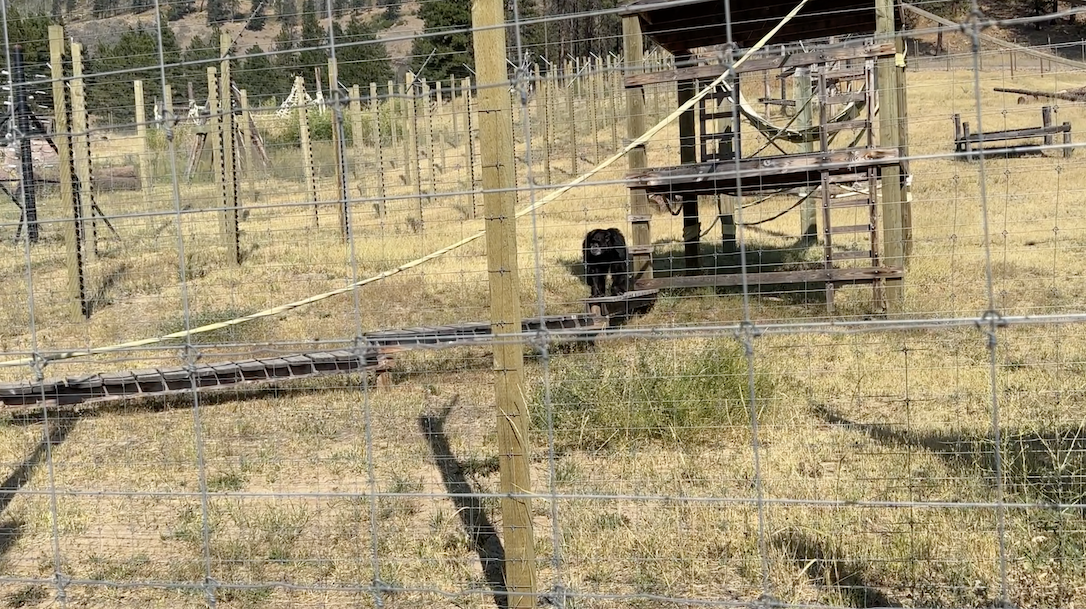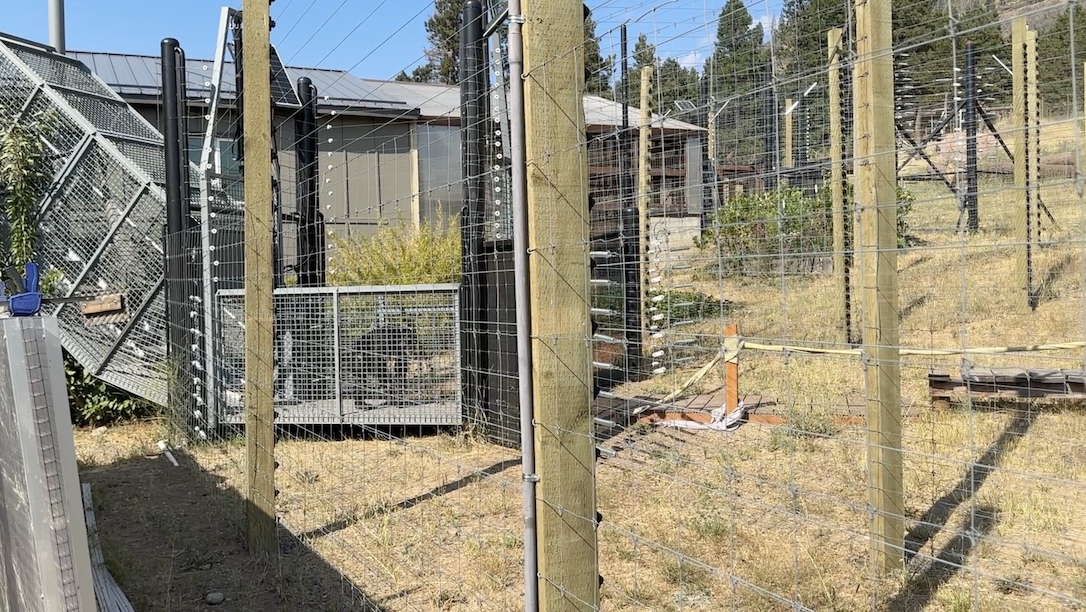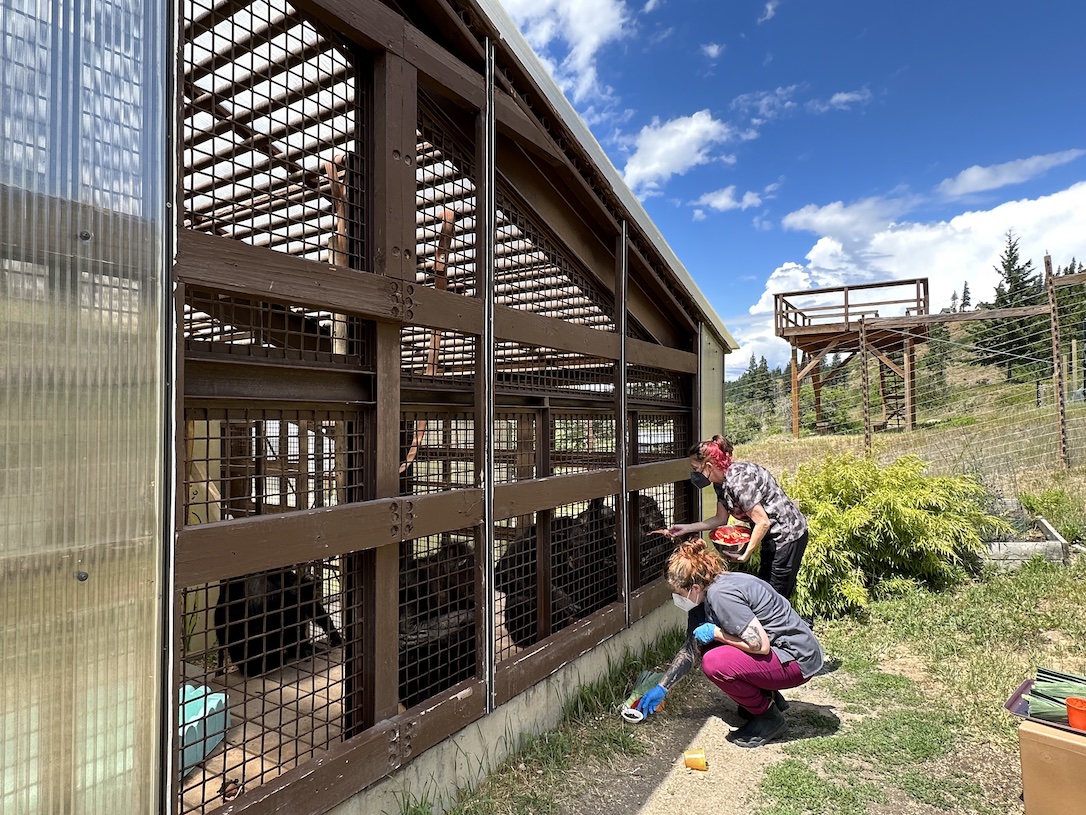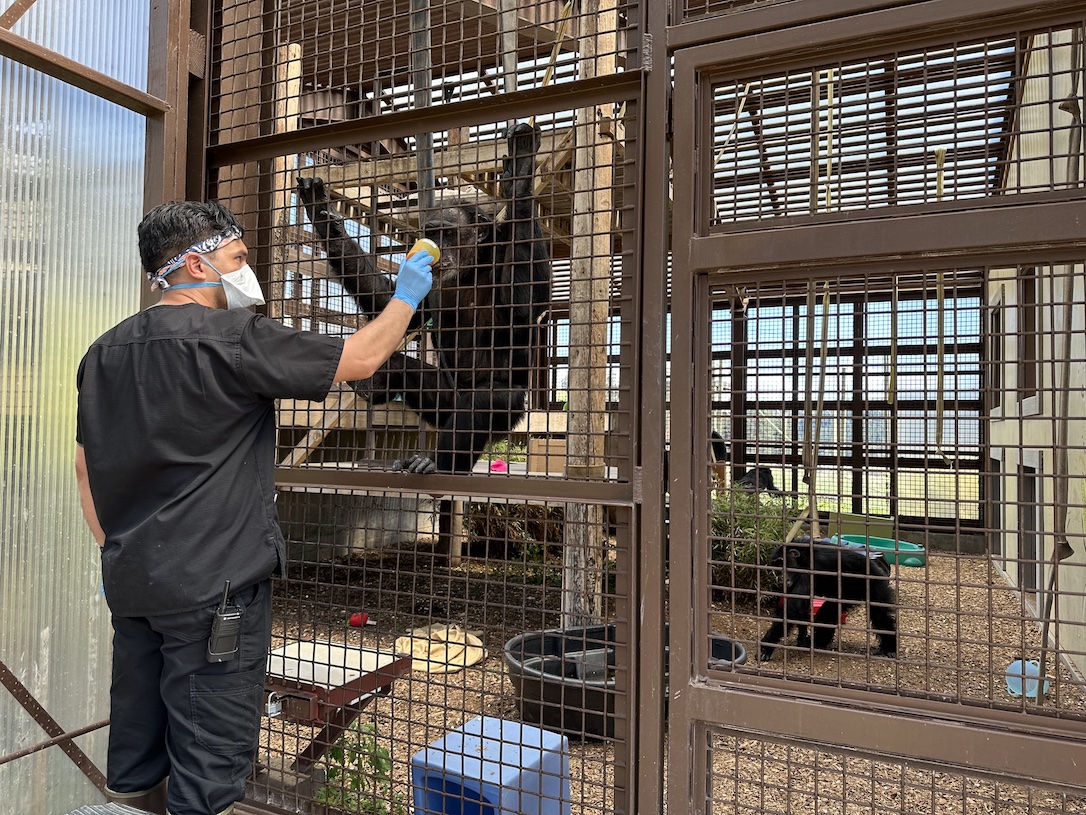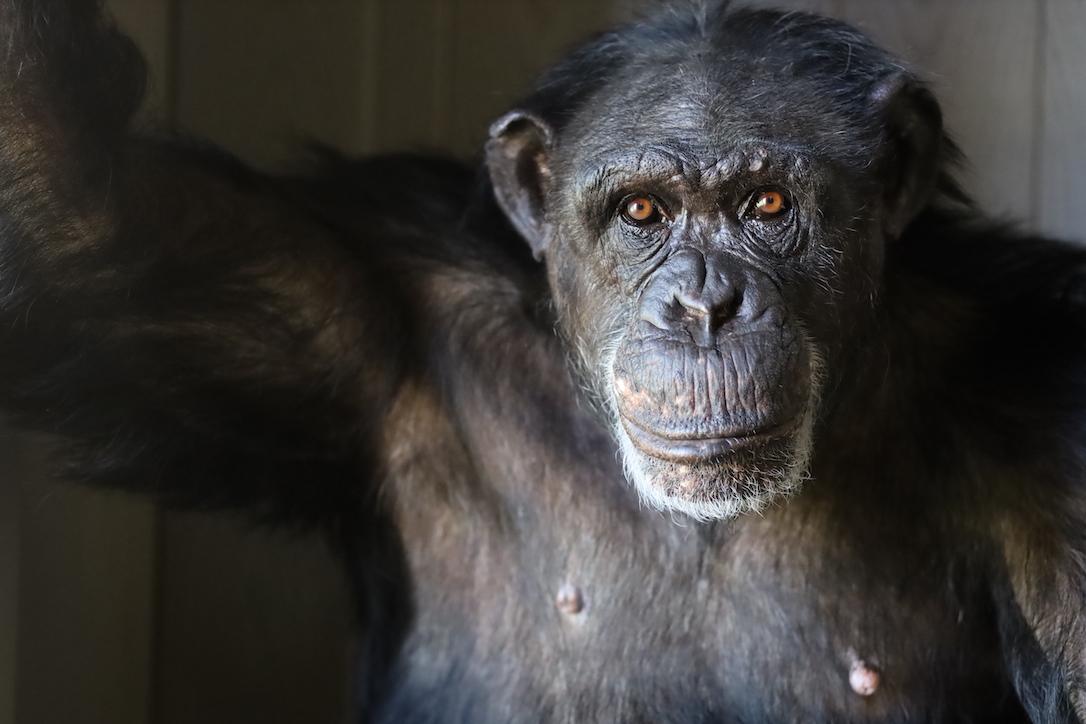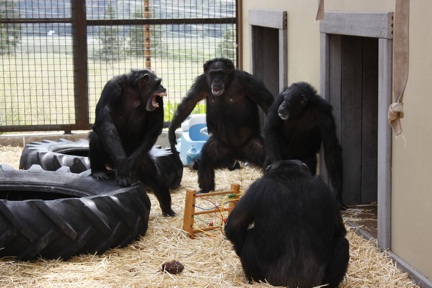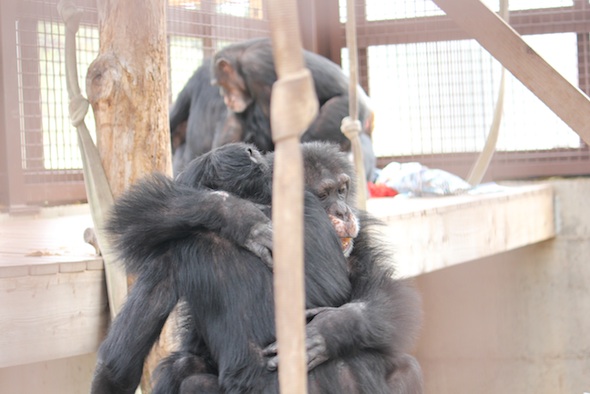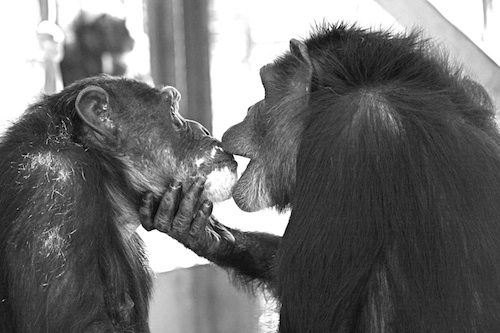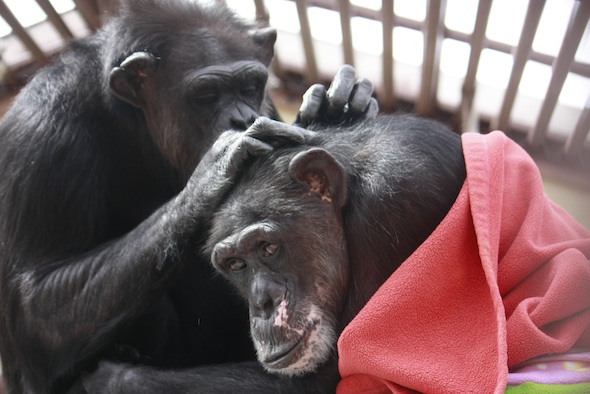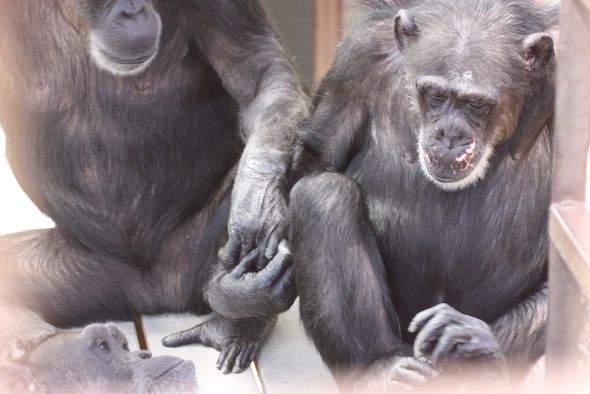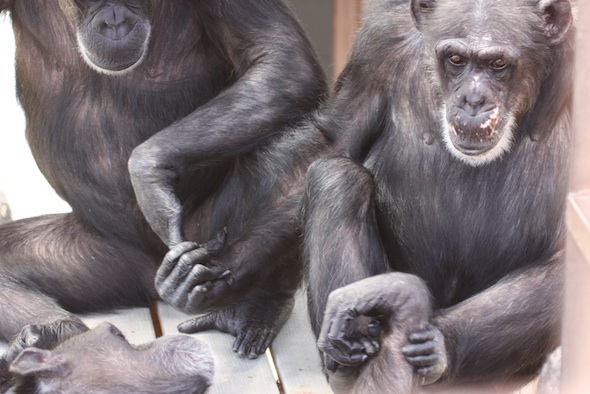Two things to note before you watch the video below:
- The video shows the chimps fighting. If that’s not your cup of tea, we understand.
- If you choose to watch, you must do so with the sound on so you can hear the narration that attempts to explain some of what you will see. The chimps will be loud at first but we’ll turn down the volume on the screaming and pant-hooting early on in the video.
Showing the chimps in your care fighting may not be what they teach in nonprofit PR/fundraising school, but I’m always hopeful that people can learn to understand and appreciate chimps as they are while continuing to support them and the sanctuaries that care for them. Sanctuary life is filled with fun, happy moments. To a lesser extent, it also contains unsettling, even terrifying moments. They are still chimps, after all.
As I mention in the video, we are often of two minds in this job. First and foremost, we are caregivers, fretting over each bump and scrape the chimps receive and agonizing over every decision we make with regard to their care. This is the mind we inhabit in the midst of a conflict. But we are also primatologists and enthusiastic observers of chimp behavior. We are the people that, like many of you, were glued to Jane Goodall documentaries as kids and who find the complexities of chimpanzee social dynamics endlessly fascinating. And as I watched the footage of this conflict, I felt my 20-year-old self, just entering the field, marveling at each and every interaction. Perhaps you will feel the same.
If by chance you are new to Chimpanzee Sanctuary Northwest, this group is the result of the integration of two smaller groups: A group of six, led by Cy, and a group of three, led (mostly) by Willy B. Almost immediately after their integration in 2022, Willy B accepted Cy’s dominance and established himself as the #2. But Willy B does not have Cy’s social skills, and from time to time that can get him into trouble with a few others in the group.
Similar to what is seen in the literature, the rate of conflict in this larger group hasn’t gone down all that much since the initial integration; it ebbs and flows and at times it may even be higher. But the conflicts are shorter and result in fewer injuries (I don’t believe in jinxes, I don’t believe in jinxes, I don’t believe…). This conflict was unlike most in that it lasted a long time; as I say in the video, this is likely because of Gordo’s unique inability to calm down. Prior to the integration of these two groups, Gordo would occasionally get this upset with Cy. Cy, having nearly unlimited patience, would just let himself be chased by Gordo until Gordo eventually wore himself out. But that was a low-ranking male venting at the alpha, who clearly felt no threat to his own safety or status. Here, the relationships between the lower-ranking males is less well-defined. And thus the stakes are higher.
There’s an important caveat that I should mention here: I describe some of what I think I’m seeing, but any time I read a matter-of-fact description about relationships and behaviors as complex as those in chimpanzees, my BS detector starts to go off. Half the time we just don’t know or we drastically oversimplify things. So let me admit that up front. And this, I should add, is with the benefit of instant replay and slow motion—now maybe you can see why we say we don’t always know what happened in real time when the chimps get in fights.
Oh, and another one: Cy gets top billing in this blog post and he certainly has the most influence over the outcome, but boy that Honey B has some guts. And there are so many other interesting interactions that I didn’t touch on, many of which are also influential. Alpha males always get the headlines while the females quietly do much of the work. But this alpha sure did put on a show.
This video also doesn’t include what happened after the fight, which in some ways is the most interesting and important aspect of chimpanzee relationship formation and maintenance.
I could probably go on all day about this so I’ll stop here. Feel free to ask questions!

